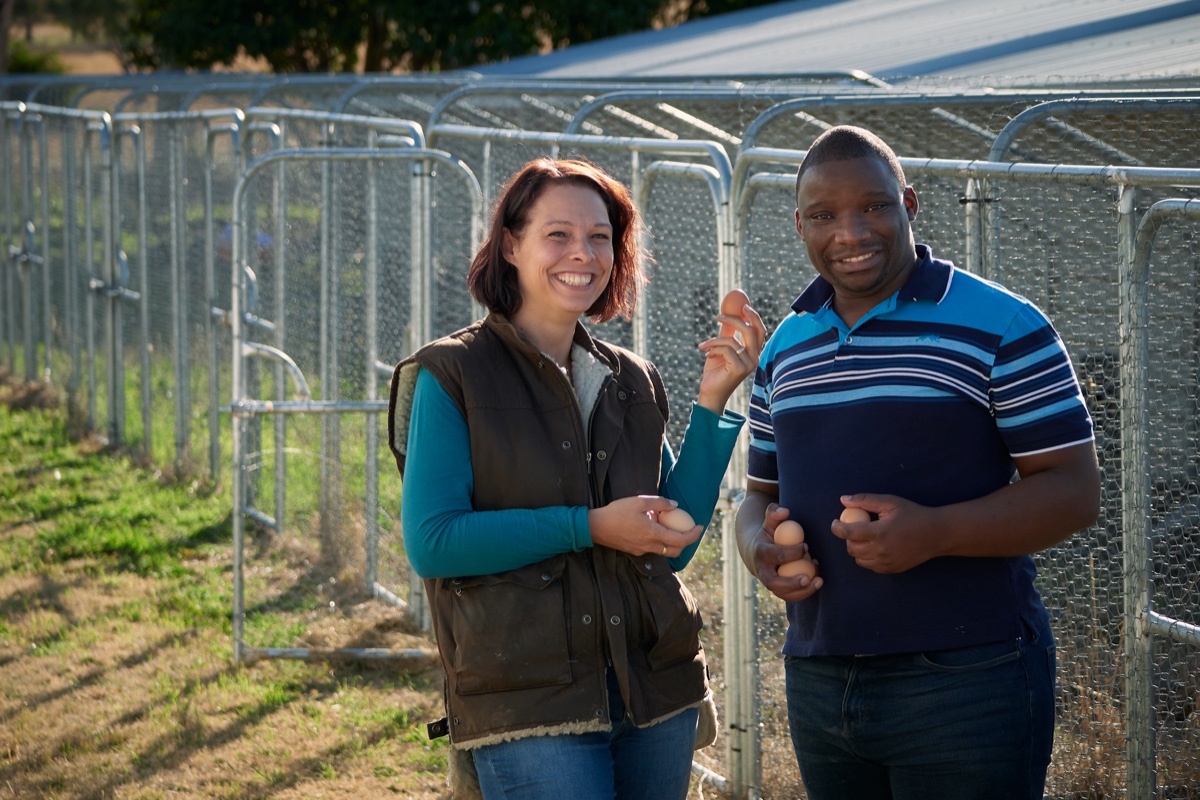Free-ranging hens can produce more eggs than those who stay at home – not because they range, but because they seem to have a more vigorous approach to life in general.
This unexpected insight into hen character emerged from one of the most ambitious chicken-tracking project ever undertaken, led by Dr Isabelle Ruhnke of the University of New England (UNE), Australia and conducted in collaboration with the Precision Agriculture Research Group and the Computation, Analytics, Software and Informatics team at UNE
The finding overturned a belief among many egg producers that hens who range are less productive, while their stay-at-home peers are more engaged with the business of egg laying.
Dr Ruhnke's project, funded by Australian Eggs and the former Poultry Cooperative Research Centre, used electronic tags to track approximately 15,625 hens across five free-range chicken sheds from the time a flock of chickens was placed in the hen house at 16 weeks of age, to when they were removed at 74 weeks of age.
The first major finding to emerge from this chicken-generated Big Data is that those hens who prefer to range outside begin laying earlier, and produce about 15 per cent more eggs at 22 weeks of age than those who prefer to stay inside.
"In some operations, a one per cent increase in egg output can translate to hundred thousands of dollars in extra revenue a year," Dr Ruhnke said. "A 15 per cent difference in productive capacity is significant." However, these early rangers also seem to drop their egg production at an older and at 72 weeks of age the early rangers laid 10 % less eggs than the hens that initially preferred to stay in the shed.It has long been understood that giving chickens the freedom to range does not mean they will all accept the offer – especially when hens are young and unexperienced.
Those hens who remain in the shed tend to be more fearful. It is assumed that these birds feel safer under cover. Dr Ruhnke noted that chickens are descendants of jungle fowl, native to dense forest. Despite thousands of generations of domestication, some birds are likely to feel vulnerable under open skies.
"Now that we know that the hens that prefer to stay in the shed are less productive at an early age, what effect will it have if we train them to go outside?," Dr Ruhnke said. "Some producers are already trying new strategies to encourage more hens to move outside to see whether it lessens the numbers of stayers in the long-term, and increases overall productivity."
This finding also opens up other questions about chicken management, Dr Ruhnke said – like whether the practice of providing a single feed mix to all the hens in the shed, regardless of their range use, is inefficient.
"In addition to the current findings, ‘rangers’ even increased their egg production if being fed a different diet that provided more nutrients. If the 'rangers' and ‘stayers’ peak with their production at different times, as we've found, then producers can probably benefit from providing different feed mixes to the chickens often found outside, the lower feeders tiers of the shed, and those who rarely leave but stay on higher in-shed structures. Feed can represent up to 70 per cent of the cost of egg production."
The mass of data generated by the project is available for further interrogation by those who want to see what further insights can be gained through a better understanding of chicken behaviour.
The project has also shown the value of tracking individual hens to reveal patterns of behaviour, and prompted ongoing discussion about the potential to routinely microchip all chickens in a production system.
The data has been made available by Australian Eggs on an interactive website that can be accessed by poultry farmers and researchers.
A YouTube video visualising the hen movement can be seen here


